Understanding Sempervivum
Ever heard someone rave about their ‘hen and chicks’ and found yourself thinking about barnyard animals? Well, in the world of horticulture, it’s not what it sounds like! We’re actually talking about the charming and hardy Sempervivum, commonly known as houseleek. Did you know that “Sempervivum” translates loosely from Latin as ‘always alive’? This rugged name sets the perfect stage for a plant famed for its resilience and ease of care.
Originating from the mountains of southern Europe, these succulents have made themselves right at home in gardens and terraces across the globe. Their adaptability to different conditions makes them a particular darling among both rookie plant parents and veteran gardeners. With their symmetrical rosettes and plump, fleshy leaves, they’re not just survivors; they’re a statement of beauty in any setting.
What sets sempervivums apart, apart from their undeniable aesthetic appeal, is their tenacity. These hardy perennials have a knack for thriving where other plants might shy away, clinging to rocky crevices and enduring the harsh mountain weather. It’s like they’ve taken the saying ‘bloom where you’re planted’ quite literally, and it’s this very characteristic that inspires gardening enthusiasts to create thriving succulent gardens of their own.
But it’s not just about their toughness; there’s a diverse palette of sempervivum varieties, each with its unique shade, size, and even seasonal color shifts. Nature sure doesn’t skimp on options here; we’re talking about a collection of over 50 species and 3000+ cultivars! If you’ve ever witnessed a sempervivum display its colors in the warm glow of the setting sun, you’ll understand why it’s a showstopper in the plant kingdom.
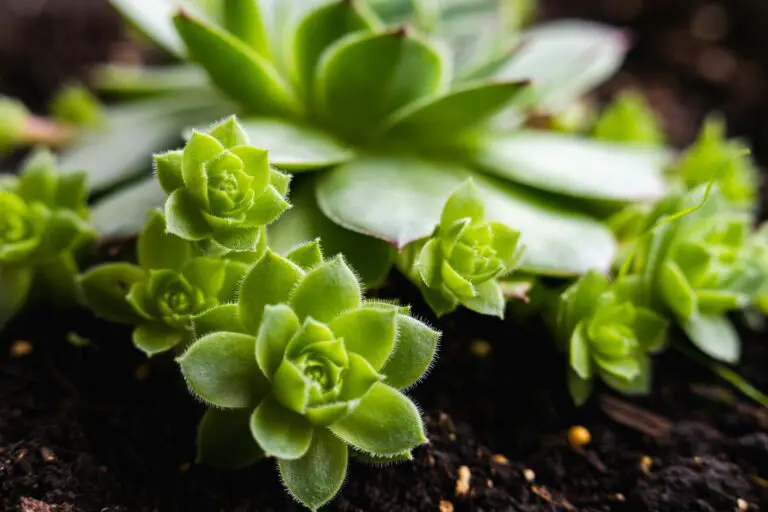
The beauty of sempervivum doesn’t just lie in its looks or ubiquity; it’s also in the stories they carry. Imagine the hands that have tended to these plants over centuries, the stone walls and rooftops they’ve adorned, and the silent resilience they’ve demonstrated throughout history. When you’re tending to your own sempervivum, you’re not only nurturing a plant, you’re becoming part of a legacy that stretches back to ancient times. Now, that’s a conversation piece worth having!
Spotting the Signs of a Dying Sempervivum
So you’ve added the ever-resilient sempervivum to your plant family, expecting it to be a hardy companion. But even the toughest plants have their bad days. Recognizing when your ‘liveforever’ plant is crying out for help is crucial to prevent an untimely farewell. Let’s ferret out the distress signals to keep your succulent from becoming a succu-goner.
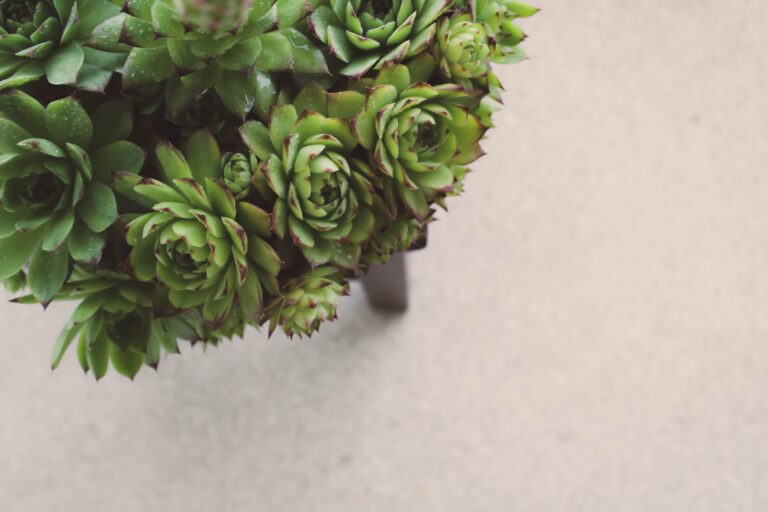
A sempervivum in despair often displays discolored leaves, much like a once-bright tapestry fading under the unrelenting sun. If the typically vibrant greens, reds, and purples of your hen and chicks have turned lackluster, it’s a telltale sign they’re not happy. Wilting, a universal symbol of plant fatigue, is your sempervivum’s white flag – a signal that all’s not right in its world. And when the leaves begin their exodus, falling off like feathers from a molting bird, your sempervivum’s life hangs in the balance.
But there’s hope on the horizon! Understanding these distress signals is the first step towards resurrecting your resilient sempervivum. It’s not just about the physical symptoms, though. A behavioral shift, like a once sun-seeking plant now recoiling into the shade, clues you into its comfort—or lack thereof. It’s like watching a once vivacious friend lose their zest for life.
Don’t let your guard down if the plant is still upright; the absence of growth or vibrant pups can indicate underlying issues. It’s like a once prolific artist suddenly finding themselves out of inspiration. The key is to observe and act promptly, guiding your sempervivum back to its usual perky self.
For more insights into keeping these and other succulents thriving, check out our ultimate guide to succulent care and ensure your green companions enjoy a long, vibrant life.
Common Culprits: Identifying the Causes
Have you noticed your usually vibrant sempervivum starting to look a little lackluster? Before you pronounce your green buddy as on its last leaf, let’s dive into some troubleshooting. It’s not all gloom and doom! Often, the problem with these hardy succulents can be fixed once we pinpoint the cause.
First up, the classic overwatering issue. Picture this: you love your plant, and you shower it with water, thinking more is better. But in reality, your sempervivum is silently begging for a break. Overwatering leads to soggy conditions that can cause root rot—a surefire way for a sempervivum dying situation. On the flip side, underwatering is just as problematic, leaving your plant parched and limp. Finding that Goldilocks zone of “just right” is key.

Next, let’s talk about uninvited guests—pests. Aphids, mealybugs, and spider mites can be the bane of your sempervivum’s existence. These tiny critters can suck the life out of your succulent, literally. Keep an eye out for telltale signs of infestation such as sticky residue or webbing.
When it comes to sunlight, it’s all about balance. Your sempervivum thrives in the sweet spot of adequate light. Too little, and it’ll stretch out in search of the sun, too much, and its leaves can scorch. Imagine a sunbather at the beach—one day is great, but without sunscreen, a week might lead to a red, regretful experience.
Finally, consider the soil situation. Poor drainage is like a pair of wet socks—no one’s comfortable with that! Your sempervivum needs soil that drains quickly and efficiently, preventing excess moisture from causing damage to the roots. Think of building a strong foundation for your plant, much like you would lay the groundwork for a healthy lifestyle.
By now, you’re equipped with the knowledge to rescue your sempervivum. For more detailed guidance on how to care for these resilient plants, check out this comprehensive care guide. And for an extra boost in keeping your green companions thriving, swing by our expert tips on succulent care. These simple adjustments can make a world of difference in the health and vitality of your plants. Happy gardening!
First Aid for Fading Houseleeks
You’ve noticed your cherished sempervivum is looking a little lackluster, and it’s setting off alarm bells. Before you start singing a eulogy for your green friend, let’s roll up our sleeves and dive into the first-aid kit for these resilient rosettes. It’s not too late; with some swift and savvy care, your succulent can bounce back from the brink.
Adjust Your Watering Ways
Remember, the sempervivum is a desert darling; it thrives on neglect rather than nurture when it comes to hydration. If you’ve been showering it with love and water, it’s time to dial it back. Let’s switch to a ‘soak and dry’ method — thoroughly drench the soil, then allow it to completely dry out before the next watering session. Overwatering is often the culprit behind a dying sempervivum, so be vigilant about your watering habits.
Battle the Bugs
Has your plant been the main course for pesky pests? Aphids, mealybugs, and spider mites can be uninvited guests at the sempervivum feast. Inspect your plant closely — if you spot these critters, it’s time for action. A gentle bath of soapy water can be a first line of defense, or for more stubborn squatters, organic insecticidal soap might be necessary. Keep a keen eye out and act fast; your houseleek’s life depends on it!
Soil Quality: Foundation Matters
The secret to a happy sempervivum lies beneath the surface. If your plant’s home is compacted, poorly draining soil, it’s living on borrowed time. These succulents love a gritty, well-draining mix that’s more akin to their natural rocky habitats. Your action plan should include repotting your stress-out succulent into fresh, aerated soil that lets its roots breathe and drain properly. It’s like moving from a cramped apartment to a spacious house with a view — your sempervivum will thank you.
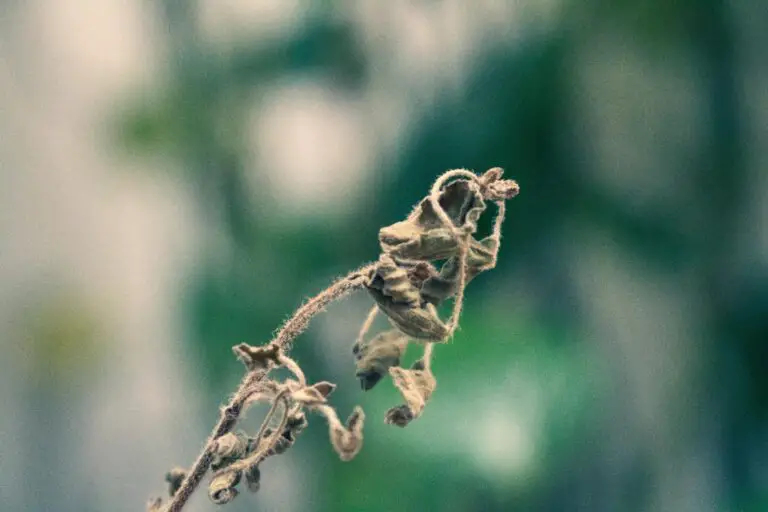
Quick intervention is the key to reviving your fading friend. By adjusting your watering habits, declaring war on harmful pests, and giving it the right soil to thrive, you can nurse your sempervivum back to health. Remember, these hardy plants have adapted to survive harsh conditions; with your help, they can overcome a few bumps in the road and flourish once more. Your wilting warrior can transform into a succulent superhero with a little know-how and tender loving care.
Preventative Measures: Caring for Sempervivum
We all want our sempervivums to thrive, not dive into decline. Adopting a few simple, long-term care practices can be like a suit of armor for your succulents, warding off potential demise. Let’s break ground and delve into the essentials that will ensure your green buddies stand the test of time.
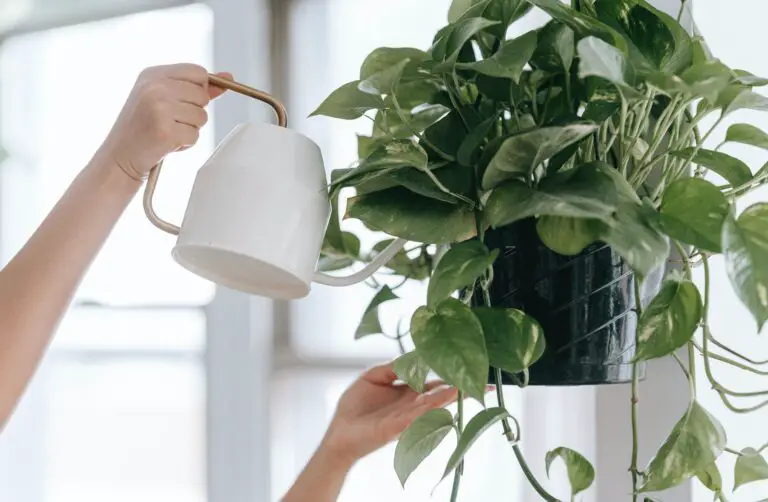
Firstly, watering with wisdom is key. Sempervivums are not thirsty for drama; they prefer a ‘less is more’ approach. Think of them as the camel of the plant world—storing water in their leaves to survive dry spells. Wait for the soil to dry out completely between waterings, and then give them a good drench. Picture Lucy in her urban jungle apartment, she marks her calendar and waters her sempervivums every three weeks, ensuring not to soak them in winter when they’re happily dormant.
Here comes the sun, maybe a little too enthusiastically for our sempervivum friends. They adore basking in the light but can burn if the sun’s too fierce. It’s all about balance. Like Mark’s rooftop garden that gets both shade and sunshine, your sempervivums should enjoy the golden hours of the morning or late afternoon, avoiding the harsh midday rays. Otherwise, you might witness a sunburn saga similar to Mark’s beach vacation last summer!
A solid foundation is everything; hence, soil composition takes center stage. Sempervivums yearn for well-draining soil—imagine wearing wet socks, nowhere near pleasant! Mix in some coarse sand or perlite, akin to how Nancy amends the soil in her prize-winning perennial beds. This will allow excess water to escape swiftly, avoiding root rot, the nasty villain of the plant world.
Last but not least, let’s talk about regular maintenance. This is not about helicopter parenting your plants, but rather adopting a suave, detective-like observation. Snip away any dead or withering leaves, much like how Sarah meticulously trims her collection, ensuring these succulent wards remain vibrant and prosperous. This vigilant grooming also helps in fending off any evil-doer pests that like to lurk in the shadows of neglect.
Recap of Care Commandments
To wrap things up succinctly, treating your sempervivum to proper care is like curating an art collection. Pay attention to detail, be patient, and your green gems will reward you with their unwavering resilience and beauty. Remember, a vigilant gardener is the best defense against a wilting sempervivum dilemma.
Troubleshooting Tips for Troublesome Times
When your hardy sempervivums start showing signs of distress, it’s like a red flag waving furiously, urging you to spring into action. Let’s delve into the succulent-saving strategies to rescue your cherished plants from the jaws of decline.
Unraveling the Root of the Problem: Root Rot
Root rot is a common nemesis for sempervivums, often caused by overbearing affection, a.k.a. overwatering. This sneaky ailment lurks beneath the soil, so you’ll need to channel your inner detective. Take a peek below ground—if you spot soggy, brown roots, it’s time for an intervention. Trim the rotted roots, replant in well-drained soil, and recalibrate your watering ways.
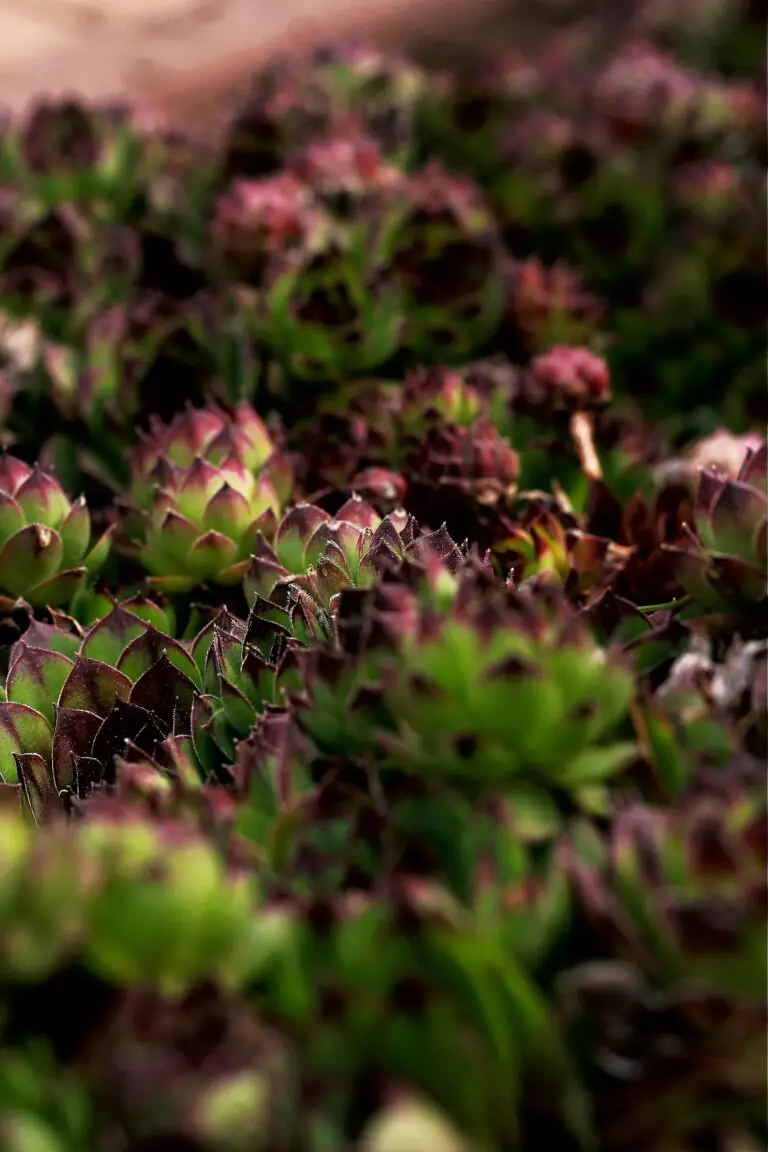
Invaders on the Leaves: Pest Infestations
Pests are the uninvited guests at your sempervivums’ party, and trust me, they can really crash it. Aphids and mealybugs are known culprits. Keep a vigilant eye out for these critters or the telltale honeydew they leave behind. If they’re thrown a surprise fiesta in your plants, introduce them to insecticidal soap or neem oil—it’s the exit music they can’t ignore.
The Sneaky Spore Spreaders: Fungal Diseases
Fungal foes like powdery mildew and rust can turn your sempervivums’ lives into a Shakespearean tragedy. Combat this by removing infected parts and giving them more breathing room. Fungicides can be the hero, but be sure it’s a suitable match for your sempervivum’s specific disease.
It’s Not You, It’s the Climate: Environmental Stressors
Sometimes, the issue isn’t pestilence or disease; it’s environment. Too much sun can lead to sunburn, while not enough can result in etiolation. Sempervivums are like Goldilocks—they like it just right. Find that sweet spot of sunlight and protective shade, and watch them perk up in gratification. Similarly, temperature swings can send sempervivums into shock, so aim for steadiness to keep their roots firmly in comfort.
Real-life examples often tell it best. Imagine your good friend Jane. She loves her ‘Hens and Chicks’ but couldn’t figure out why they were meeting their untimely end. A little investigation revealed a classic case of over-watering and poor drainage— a perilous pitfall for these drought-loving darlings. Once Jane adjusted her care routine to include less H2O and more TLC, her sempervivums bounced back like the resilient rockstars they are.
Remember, each sempervivum situation is unique, much like a fingerprint. Tailor your rescue mission specifically to what your succulent signals, and you’ll stand the best chance of restoring them to their former glory. Keep these tips in your botanical toolkit, and you’ll be well-prepared for those troublesome times.
Revival Stories: Bringing Sempervivum Back from the Brink
The tale of the sempervivum’s survival is nothing short of horticultural heroism. These hardy succulents, often known as ‘houseleeks,’ are as tenacious as they are charming. But what happens when these resilient rosettes start spiraling towards demise? Fear not, for sempervivum enthusiasts around the globe have documented some incredible comeback stories that are sure to breathe life into your green-thumbed ambitions.
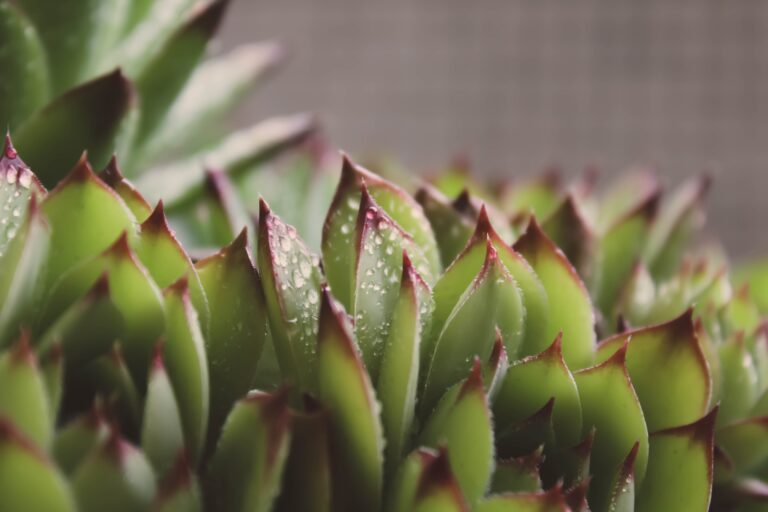
Consider Linda’s story: a sempervivum enthusiast from the rocky coasts of Maine. Her collection of over thirty varieties faced an unprecedented onslaught of root rot after an unusually wet spring. Refusing to surrender her beloved collection to the decay, Linda excavated each plant, trimmed away the rotted parts, and let them callous over. She provided a fresh, well-draining soil mix and adjusted the plants’ location to ensure better airflow and sunlight exposure. Miraculously, with patience and careful monitoring, her sempervivums bounced back fuller and more vibrant than before.
Then there’s the account of Javier, a seasoned sempervivum grower in Spain. A brutal summer had left his plants scorched and seemingly beyond salvage. Yet, Javier knew that sempervivum’s dormant potential could be unlocked with the right approach. He set up a makeshift shade cloth to protect the delicate survivors from direct sun and began a regimented watering schedule to rehydrate the roots without causing further stress. His finesse paid off as the sempervivums gradually awakened, with their once-pale leaves regaining their customary jewel-toned splendor.
Each of these stories serves as a testament to sempervivum’s legendary resilience. When provided with the appropriate care adjustments, these succulents can remarkably recover from even the most dire circumstances. Armed with the experience of their botanic brethren, gardeners can feel emboldened to cultivate their own sempervivum revival tales.
Frequently Asked Questions
Do you find yourself whispering a desperate “SOS” as you watch your beloved sempervivum plants wither away? Fear not, fellow plant enthusiasts! Below, you’ll find the answers to the burning questions you’ve been uprooting in your quest to save your succulents.
Why is my sempervivum turning brown and soggy?
Meet Jack who had the same problem with his rooftop garden in Brooklyn. It turned out Jack’s sempervivum was too pampered with water, leading to root rot. Sempervivum, also renowned as ‘houseleeks’, detest having wet feet. Reduce your watering schedule and ensure your potting mix is well-draining to avoid soggy scenarios. Remember, these succulents are desert dwelling by nature—they thrive on neglect, not on a flood!
My sempervivum has stopped growing, what’s going on?
Picture Lucy in sunny Miami, fretting over her stationary sempervivums. She discovered they were craving more sunlight than her shaded porch could provide. If your sempervivum has hit a growth standstill, it’s likely yearning for more light. These hardy plants love to soak up at least six hours of sunlight a day. Find them a sunnier spot, and watch them grow happy and healthy.
What are these black spots on my sempervivum leaves?
When Ken from Portland noticed black spots speckling his sempervivum, he first thought it was an artist’s splash of paint—only to find out it was a fungal infection. Black spots can be a sign of fungal issues, often due to damp conditions. Improve air circulation around your plants and scale back on the moisture to beat the black spot blues. And don’t forget to remove any affected leaves to prevent further spread of the fungus.
Are insects responsible for the damage to my sempervivum?
Susan’s urban jungle in San Francisco was invaded by aphids, turning her sempervivum into an all-you-can-eat buffet. Yes, insects like aphids and mealybugs can be responsible for damage to your plants. Gently wash off the pests with water, or treat your plants with neem oil or insecticidal soap. Just like you’d safeguard your home, defend your sempervivums from these tiny trespassers.
Keep these SOS tips handy, and your sempervivum will be flourishing once again. Consider this a small first-aid kit for your green friends, equipping you with the know-how to troubleshoot common ailments and keep your succulents in peak condition.




